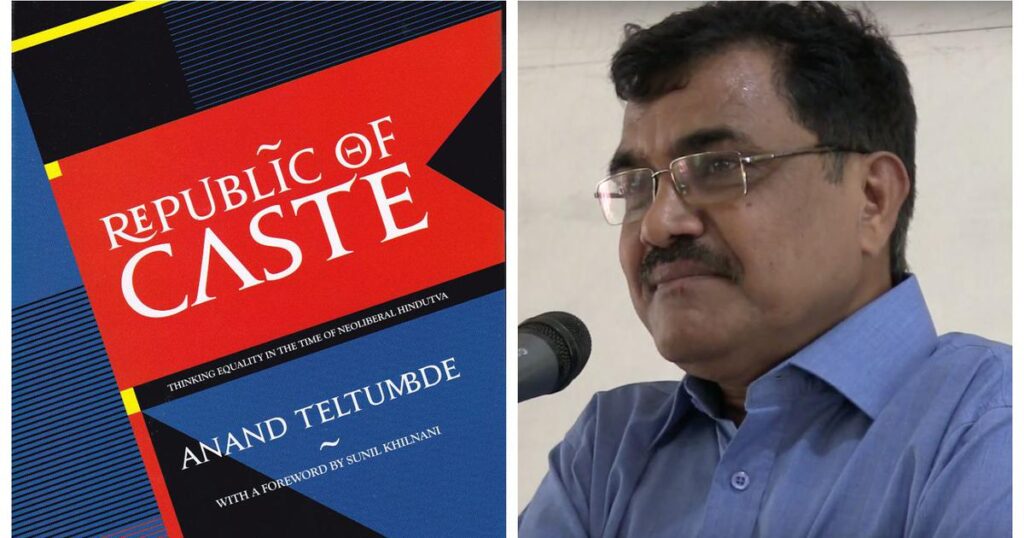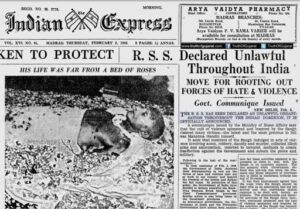“Turn in any direction you like, caste is the monster that crosses your path.” This powerful image from Dr Ambedkar’s Annihilation of Caste, published in 1936, still rings true today. That would be obvious enough from the point of view of the oppressed castes, but they are not the only victims of the caste system. India’s entire society, culture and politics are also casualties of it.
If you are not convinced, you may wish to read Republic of Caste, by Anand Teltumbde. The book is not just about caste – it is a wide-ranging collection of essays that “deal with issues which may be taken as crucial for our collective survival as a democratic republic”, as the author puts it. Still, caste runs through it as it runs through India itself. From communalism to sanitation and elections to economics, Teltumbde helps us to see the pervasive and pernicious role of caste in contemporary India. He restores the centrality of caste to our understanding of Indian society and how to change it.
This is an unsettling book. It is likely to cause you some discomfort at times, whatever your political leanings. Anand Teltumbde is a radical and fiercely independent thinker who is not afraid of departing from the beaten track. For instance, he is critical of India’s “status-quoist” Constitution, and even holds it responsible for the persistence of caste. The main reason, as he sees it, is that the Constitution laid the foundations of caste-based reservations. Teltumbde presents a rare and provocative critique of reservation from a Dalit perspective.
This critique is in tune with his conviction that the destruction of the caste system calls for renouncing caste-based mobilisation, because it reinforces divisive caste identities. On this, he parts company with some sections of the Dalit movement. “There cannot be a caste-based solution to the problem of inequality,” he argues. Instead, Teltumbde advocates working-class unity on an anti-caste platform, or rather, a platform that includes the annihilation of caste as a fundamental commitment – “class struggle with an anti-caste core”, as he puts it. He does not believe in the Bahujan approach of trying to unite a broad range of castes based on their caste identity, ignoring the conflicts that divide them (for instance, the exploitative relations that often prevail between Dalits and the “Other Backward Classes”). He feels that workers must organise as a class around their collective interests, including the end of the caste system.
That may seem like a natural strategy, since most workers are victims of the caste system in one way or another. One would expect the rejection of the caste system to appeal to them and also help them to unite. Class struggle and caste struggle seem to be made for each other. Instead, the two have diverged, and even turned mutually hostile. The Communist movement and Dalit movement in India became rivals if not opponents. There have been some reconciliation efforts in recent years, but the legacy of mutual suspicion is hard to shed. As Teltumbde sees it, “the biggest obstruction to the growth of a politics of change has been the growing divergence between the dalit and left movements.”
In his diagnosis of this estrangement, Teltumbde reexamines the early days of the Communist and Dalit movements in India. Communist leaders, or ideologues at least, were mainly from the upper castes (“mostly a bunch of Brahmin boys”, as Ambedkar said in one interview), and they failed to take caste seriously. That was partly because Communist ideologues had a simplistic understanding of the Marxist distinction between “base” and “superstructure” (a broad distinction between the mode of production, on the one hand, and institutions of a more cultural, ideological or political nature on the other). Caste, they thought, would vanish on its own after the Revolution – meanwhile, it was futile to fight it without resolving class contradictions. Some of them, perhaps, felt that the best way to fight caste is to ignore it. The failure of Communist leaders to address the caste question alienated Dalit activists later on. The alienation was reciprocal, as Communist leaders felt that the Dalit movement was dividing the working class.
Teltumbde’s analysis is persuasive, but I suspect that there is a deeper problem. When old-time Communist leaders “feared that confronting the issue of caste might lead to organisational break-up”, as Teltumbde puts it, they certainly lacked courage in overcoming that fear, but the fear itself was perhaps not misplaced. Caste culture is deeply ingrained in India and it is not easy to persuade anyone, even among its victims, that the caste system is wrong in itself – not just untouchability, or caste discrimination, or what Hindu nationalists call “casteism”. For many people, caste is a fact of life, and the idea of doing away with it does not arise. Further, even those who resent oppression from privileged castes often value the modicum of togetherness and solidarity they feel within their own caste.
The caste-based mobilisations that Teltumbde deplores reflect the tendency of collective action in India to coalesce around caste or community (block voting on caste lines is a prominent example). Even Ambedkar’s visionary appeal for mass conversion to Buddhism failed to resonate much beyond his own community, the Mahars. To put it another way, the destruction of the caste system perforce includes the destruction of one’s own caste – that is a little bit like asking people to go around without clothes.
It is, thus, no wonder that inciting workers against the caste system per se is often difficult. This is not to deny that it may still be the way forward. After all, there have been vibrant anti-caste movements in at least some parts of the country, notably Maharashtra and Tamil Nadu. Teltumbde’s vision of working-class unity with an anti-caste core may or may not be easily realisable, but it is an important line of thought and action at the very least.
The failure of Indian democracy
As mentioned earlier, this book is not just about caste. It is also a larger reflection on Indian society and politics. Many sections of the book are gems in their own right, from the author’s incisive analysis of communalism to his astute profile of Kanshi Ram and his critical appraisal of the Aam Aadmi Party. If there is an overarching message in these essays, other than the ubiquitous monstrosity of caste, it is the failure of Indian democracy – a “charade” as Teltumbde calls it.
Indian democracy tends to appear in a rosy light to the privileged classes because democratic institutions work quite well for them. But the same institutions (elections, parliament, courts, media, education system and so on) often work in a very different if not diametrically opposite manner for the underprivileged. A prime example is the so-called justice system, which is more likely to look like an injustice system to the victims of arbitrary arrests, fabricated cases, gratuitous incarceration and other forms of judicial harassment – a routine way of preventing people from stepping out of line. Teltumbde himself is a victim of this injustice system, incarcerated as he is today under the Unlawful Activities Prevention Act, or UAPA, a draconian law that has no place in a real democracy.
The health of Indian democracy looks even poorer if we think of democracy not just as a method of government but also as a way of life based on liberty, equality and fraternity. In terms of these constitutional values, “there is not an iota of improvement”, as Teltumbde aptly puts it. In fact, right now the country seems to be going backward on each count.
There is one curious omission in the book – the absence of any discussion of gender issues. This is not a criticism (the author is free to write on what he likes), but a disappointment. Just as communalism and class conflict are entangled with caste, as Teltumbde argues, so is patriarchy. Caste reinforces men’s obsession with the subjugation of women, especially among the privileged castes, because a free woman is a threat to the purity and unity of the caste. The connection between patriarchy and the caste system has been well recognised by a long line of anti-caste and feminist thinkers. Teltumbde’s thoughts on gender issues would have enriched this illuminating book.
Republic of Caste is an invaluable introduction to the essential ideas of Anand Teltumbde, one of the most important thinkers of our times. The book is all the more engaging as it is written in a clear and lively style. Teltumbde is a master at going to the heart of complex matters and putting them in simple, powerful words. Few books have made a deeper impression on me since 2002, when I stumbled on Annihilation of Caste in a dusty library of Allahabad and read it in one sitting.
(Jean Drèze is a freelance development economist. Courtesy: Scroll.in.)




